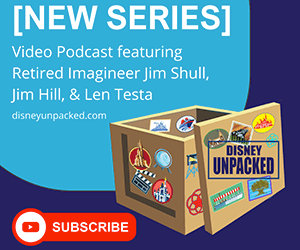Theme Parks & Themed Entertainment
A Special Wednesday edition of Ruminations
Folks in the San Francisco Bay Area have always managed to find some interesting places for assorted diversions and amusements. This week, Roger is kicking off a series of columns that will take us to look at them – past, present and maybe even the future. So get comfy and read along…
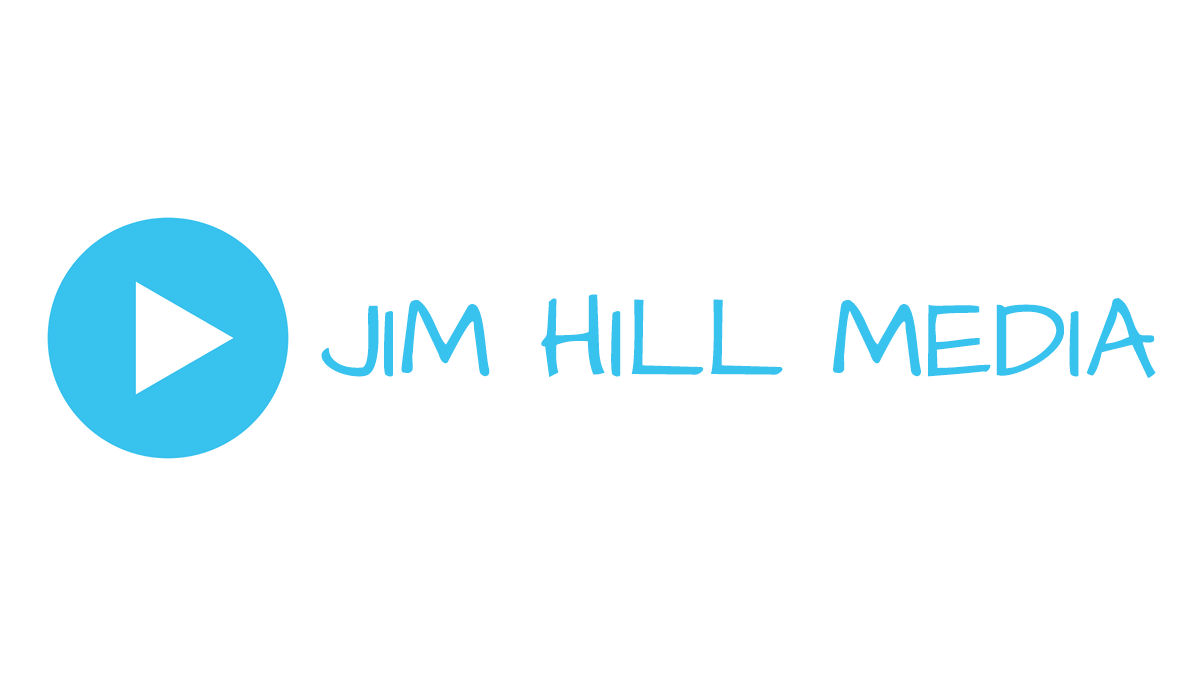
It’s that time of year again. Weather is generally nice and folks head off to their favorite places for a bit of rest and relaxation. Sometimes, it’s a weekend or longer, but most likely is the day trip. Up this way in Northern California, that’s been something of a tradition for a long number of years. As diverse as the population of the area has been, there have also been amusements and attractions that these people found enjoyable.
Some are gone, others are still with us today, and even a few are in the works for the coming years. And there are more than you might suspect that never made it beyond the planning stages. All in all, it’s a series of tales worth telling, so I’ll be sharing them with you every other week for the coming months.
Now, if you have visited Disneyland in the last couple of years, I would guess that you might have visited the Paradise Pier area of Disney’s California Adventure. The Golden State has had it’s fair share of seaside amusements, and those were the inspirations upon which Imagineering drew from. The Bay Area has been lucky enough to have more than a couple of these, but one continues to be a perennial favorite. So that’s where we will begin this journey.
The climate here in the Bay Area during the summer months tends to be fairly straight forward. Well inland, the mercury often climbs above the century mark. Closer to the Bay, it can still get toasty now and then. But it is that glorious coastal fog that manages to be the salvation of the entire area, when it sails in and cools things off from San Francisco to Sacramento and beyond.
I’ve lived in three distinct microclimates here. Out here in Livermore, mid to high Nineties are the rule. Along the Bay in Mountain View, Seventies and Eighties were about as much as we would expect. On the coast in Pacifica, it seemed like there were days when the fog was there permanently. I’ve heard tales of some residents shrieking in fear when a white ball would appear in the sky, as they didn’t know what it was…
But out here in the Tri-Valley, the presence of fog is nothing short of miraculous. When the wind comes from the West instead of the North or East, life simply becomes more bearable. Folks tend to calm down as the temperature drops. Opening the doors and windows, you can even sleep without the air conditioning running all night long. Pacific Gas & Electric (or Pacific Greed & Extortion as some call it) manages to take less out of our wallets when the fog rolls in from the coast.
That has been the case here for a long time. And as long as there have been people in the area, they have looked for relief from the heat. Archeologists have found artifacts from some of the tribal groups that roamed the area along the coast as well as by the bay. The Spaniards built many of their settlements along the coast as well. The Mission Trail from San Diego north managed not to be too far inland. When the Gold Rush drew more people to San Francisco, they also took advantage of cooler temperatures by the Bay, rivers, lakes and the coast.
One enterprise that came out of those days was the South Pacific Coast Railroad. From a ferry slip on the Bay in Alameda, trains carried passengers and freight along the shore of the East Bay to Santa Clara and then over the Coast Range of mountains to Santa Cruz . (And just to keep things interesting, the railroad was begun in 1876 as a project of Bonanza King James Fair, who you might remember from one of my previous tales of San Francisco. He was one of the folks from the Nevada Bank that helped bring down Billy Ralston and the Bank of California. Another great example of how Comstock silver and gold were put to use developing the state of California.)
It was quite the accomplishment as passengers could ride from San Francisco to Santa Cruz in just under four hours and that included a ferry ride from San Francisco to Alameda. Advertisements heralded the facts of the trip including forty miles less than other routes between the two points and that the journey was made without having to change trains or cars. The Santa Cruz Mountains presented their own challenge to cross, but offered benefits to be reaped in the form of timber and agricultural products. Now these could be expedited to market and profits shared.
The Mountains also offered a great location for relaxation. Resorts and vacation communities sprang up along the line. People from all over the Bay Area could make the journey here with relative ease and in moderate comfort, in those pre-automotive days. In 1887, the railroad was purchased by the Southern Pacific but continued operations unchanged. The new century saw plans for the line to be upgraded from the original three-foot gauge (that’s the distance between the two rails) to the standard or four feet, eight and one half inches gauge used by the Espee. A minor event on April 18, 1906 slowed those plans considerably. The San Francisco earthquake did it’s share of damage here including dislocating the railroads summit tunnel (which has the misfortune to cross the San Andreas Fault in it’s middle). Repairs and the conversion to standard gauge were completed in 1909.
During the 1915 Panama Pacific Exposition in San Francisco, the Southern Pacific took advantage of the scenic wonders offered by the route over the mountains and detoured all of it’s mainline passenger trains between Los Angeles and the City through Santa Cruz. A special stop was often made to view the giant coastal redwoods at Big Trees (near Felton). In 1927, the railroad began operation of it’s “Suntan Specials”, putting coaches from commute service between San Francisco and San Jose to work on the Sunday’s. The service proved so popular that it was not uncommon for the train to operate as many as four sections, carrying as many as 5,000 people.
Mother Nature played her own tricks on the railroad over the mountains for much of the existence of the line. The biggest one came January of 1940 as heavy rains (which are actually very common in this part of the California Coast) washed away the railroad through the mountains in many places. By that time, what passenger and freight service remaining on the line had been rerouted from another connection at Watsonville. With the growth in popularity of the automobile and the construction of a highway across the mountains from San Jose, there was no reason to invest in what was sure to be an expensive rebuilding. With the coming of World War II, priorities shifted elsewhere on the Espee system.
Mary Lee Washburn doing her part to entice riders to ride the “Suntan Special” in 1948. From the Santa Cruz Beach Boardwalk Photo Gallery.
1947 saw the return of the “Suntan Specials” but not over the mountain. Trains now ran from San Francisco to San Jose and then to Watsonville and on to Santa Cruz. This link has some views of those trains. The last “Suntan” ran in the mid-Fifties. In the last ten years, occasional excursions have returned to the line in an effort to create support for a resumption of passenger service to Santa Cruz. That’s an attractive alternative at times to the slow and overcrowded Highway 17 from San Jose.
So why have so many folks chosen to make the trek to Santa Cruz? Well, there are a number of reasons. Some of the best beaches for surfing are in the area, and the city is a bit of a haven for some of the counter-culture that California is known for. The University of California at Santa Cruz has the banana slug as its mascot . Now, that’s one item you won’t find at Paradise Pier in Disney’s California Adventure; but it would make a great addition, don’t you think? Get your official slug t-shirt right here!
But, most of those people have chosen the Santa Cruz Beach Boardwalk as their destination. This photo from 1889 shows the railroad (which is still carrying passenger trains in the same location today and the beach as popular place to enjoy the day. The natural sandy beach still attracts visitors.
The turn of the Twentieth Century saw the popularity of the beach grow and the construction of permanent facilities, under the direction of local real estate promoter Fred Swanton. His vision was to create a Coney Island of the west. In 1904, “Neptune’s Casino” opened for visitors. As an ornate “pleasure casino” it was the highlight of a visit. However, twenty-two months later, the structure burned. A new boardwalk facility opened in 1907 and still greets guests today.
For coaster junkies, this is nirvana. The classic wooden “Big Dipper” was built in 1907 – in only seven days! I first saw it on a visit in the mid-Sixties and have enjoyed some great rides in the years since. If you want to see what inspired DCA’s “California Screamin'”, then this is it! With all the motion you would expect from a wooden coaster, and a great ocean view, this is one not to miss if you are in the area. (That means you, Jim – worth the side trip on your VES visit next month!)
The Boardwalk has seen it’s fair share of history over it’s lifetime. The “Cocoanut Grove” Grand Ballroom was a favorite stop for all of the big bands during the Swing Era. The revival of interest in that style of dancing hasn’t hurt either as it now hosts occasional swing dance parties among other events.
A series of free concerts on the beach are a great way to spend a Friday evening during the summer. One of the bands scheduled to appear this year (August 13), Papa Doo Run Run , has a Disneyland connection. They were one of the “Celebrity House Bands” appearing the Park between 1975 and 1990. With their brand of California surfing music, they’ve been a popular attraction all over the place, even in Hawaii. Their concert at Santa Cruz has also been something of a fixture as they have been playing the middle Friday night in August for the last fourteen years. (Heck, I even remember this bunch playing for dances at my high school back in the mid-Seventies!)
There’s plenty more to keep you occupied including an aerial tramway or skyway that travels above the boardwalk from one end to the other. There are 34 rides and attractions in all including a 1911 Looff Carousel — complete with brass (actually now steel) rings and a 342 pipe band organ. Check this link for all the details. Tickets range from individual rides and or attractions to an all day or all season pass.
The usual way to get from San Jose to Santa Cruz is to driver over Highway 17 across the mountains. The Santa Clara Valley Transportation Authority offers a connecting bus service from either Amtrak or Caltrain. The Highway 17 Express or Route 970 travels from the Diridon train station in downtown San Jose to the Santa Cruz Metro Center – a short walk from the Beach.
But, my favorite way – short of direct rail service from San Jose via Watsonville that hasn’t materialized just yet – is to ride the Santa Cruz, Big Trees and Pacific from Felton down to the Boardwalk. While you may have to drive part of the way from San Jose over the mountains to Felton, there are several options, Highway 9 being an interesting diversion. But once in town, you can park at Roaring Camp (a $6 charge regrettably) and ride the train down the hill. Along the way, you travel through the Henry Cowell Redwoods State Park (passing the station of Big Trees – the site of a presidential visit by Theodore Roosevelt) and then along the San Lorenzo River Gorge right down to the station stop of Casino. The “Suntan Specials” used to make the same stop right in front of the Boardwalk. Timing it correctly, you can depart from the Roaring Camp depot at 10:30 a.m. and arrive at the Beach about an hour later. A late afternoon return is possible with a departure from Casino at 4:30 p.m. and be back in Felton an hour later. The railroad occasionally carries carloads of freight as well, offering a rare opportunity to ride on a mixed train (freight and passenger service combined). The roundtrip fare is $20 for adults and $15 for children. Check the railroad’s web pages for details. A three-hour roundtrip between the two points is also available.
So there you have it! The first in the series of amusements in the Bay Area. Coming next week, more scoop on “Rex Steele: Nazi Smasher” and other assorted goodies. And down the road, there are more installments as I’ll show you more of those favorite diversions. Stay tuned!
I’m revising my donation pages and want to thank everyone for their support – personally and for the Jim Hill Media message boards. As long as you keep reading ’em, I’ll keep on writing ’em…
Now over on the Jim Hill Media Message Boards, it sure would be nice if a couple of folks would each kick in a single dollar to help us reach our goal and pay for the boards for a few more months. We’re about two-thirds of the way there, so help make it happen! That’s less than the price of that Starbucks latte…
History
The Super Bowl & Disney: The Untold Story Behind ‘I’m Going to Disneyland!’

One of the highlights of the Super Bowl isn’t just the game itself—it’s the moment when the winning quarterback turns to the camera and exclaims, “I’m going to Disney World!” This now-iconic phrase has been a staple of post-game celebrations for decades. But where did this tradition begin? Surprisingly, it didn’t originate in a stadium but at a dinner table in 1987, in a conversation involving Michael Eisner, George Lucas, and aviation pioneers Dick Rutan and Jeana Yeager.
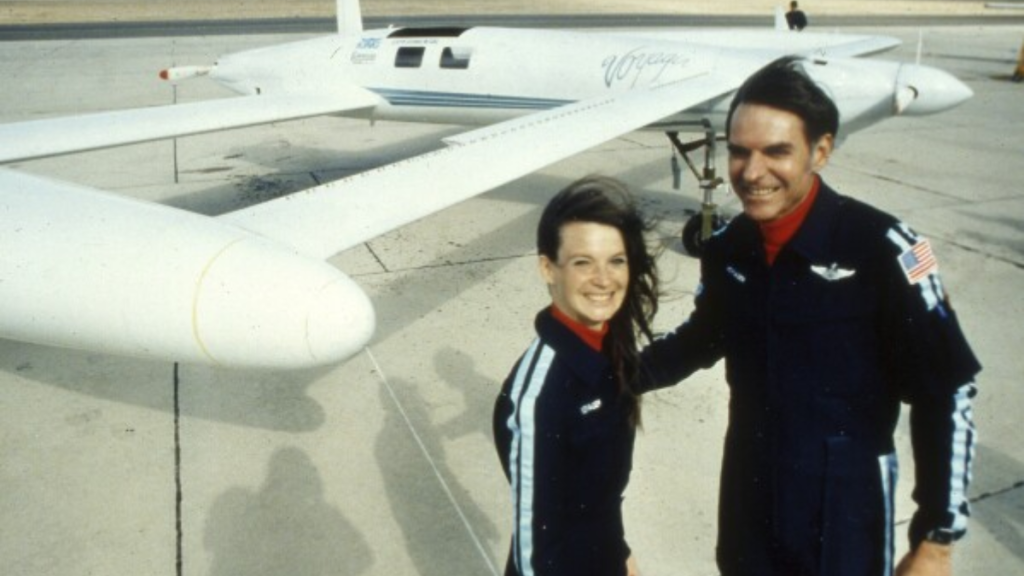
The Unlikely Beginning of a Marketing Sensation
To understand the origins of this campaign, we have to go back to December 1986, when the Rutan Voyager became the first aircraft to fly around the world without stopping or refueling. Pilots Dick Rutan and Jeana Yeager completed the nine-day journey on December 23, 1986, flying over 26,000 miles before landing at Edwards Air Force Base. Their historic achievement earned them national recognition, and just days later, President Ronald Reagan awarded them the Presidential Citizen Medal at the White House.
Meanwhile, Disney was gearing up for the grand opening of Star Tours at Disneyland, set for January 12, 1987. Following its usual playbook of associating major theme park attractions with real-world pioneers, Disney’s PR team invited astronauts Gordon Cooper and Deke Slayton to the launch event. But in a twist, they also invited Rutan and Yeager, who were still making headlines.
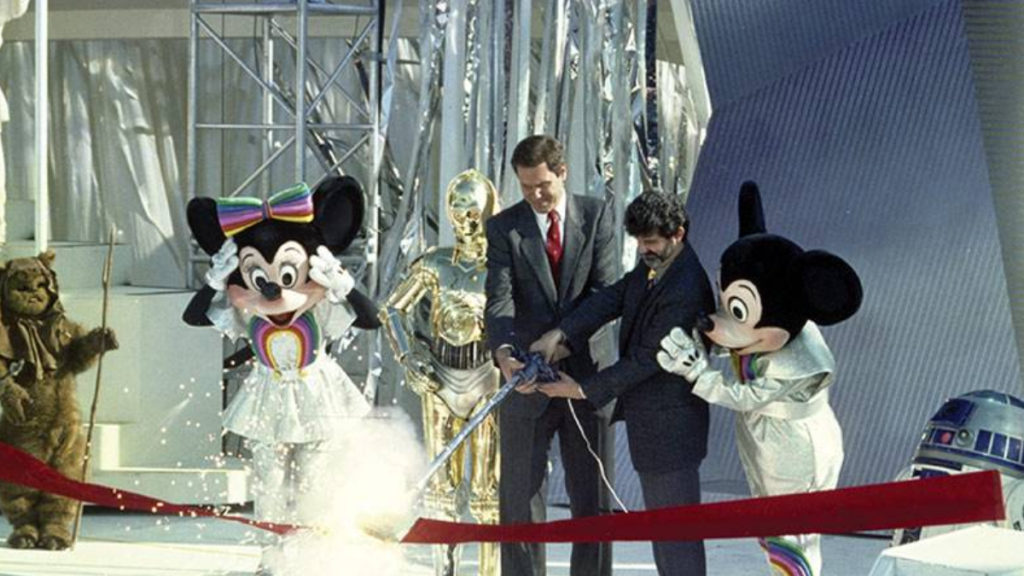
A Dinner Conversation That Changed Advertising Forever
After the Star Tours opening ceremony, a private dinner was held with Disney CEO Michael Eisner, George Lucas, and Eisner’s wife, Jane. During the meal, Eisner asked Rutan and Yeager, “You just made history. You traveled non-stop around the planet on a plane without ever refueling. How are you ever going to top that, career-wise? What are you two gonna do next?”
Without hesitation, Jeana Yeager replied, “Well, after being cramped inside that tiny plane for nine days, I’m just glad to be anywhere else. And even though you folks were nice enough to fly us here, invite us to your party… Well, as soon as we finish eating, I’m gonna go over to the Park and ride some rides. I’m going to Disneyland.”
Jane Eisner immediately recognized the power of Yeager’s statement. On the car ride home, she turned to Michael and said, “That’s a great slogan. I think you should use that to promote the theme parks.” Like many husbands, Michael initially dismissed the idea, but Jane persisted. Eventually, Eisner relented and pitched it to his team.
The Super Bowl Connection
With Super Bowl XXI just around the corner, Disney’s PR team saw an opportunity. The game was set for January 25, 1987, at the Rose Bowl in Pasadena—just miles from Disney Studios. What if they convinced the winning quarterback to say, “I’m going to Disneyland” live on-air?
Disney quickly struck a deal with both quarterbacks—Phil Simms of the New York Giants and John Elway of the Denver Broncos—offering each $75,000 to deliver the line if their team won. Simms led the Giants to victory, making history as the first athlete to say, “I’m going to Disney World!” on national television.
A Marketing Triumph
That year’s Super Bowl had the second-highest viewership in television history, with 87 million people watching Simms say the famous line. The next day, Disney turned the clip into a national commercial, cementing the phrase as a marketing goldmine.
Since then, “I’m going to Disneyland” (or Disney World, depending on the commercial) has been a staple of championship celebrations, spanning the NFL, NBA, and even the Olympics. What started as a casual remark at dinner became one of the most successful advertising campaigns in history.
A Lasting Legacy
Jane Eisner’s keen instinct and Disney’s ability to act quickly on a great idea created a tradition that continues to captivate audiences. The “I’m going to Disneyland” campaign remains a testament to the power of spontaneous inspiration and smart marketing, proving that sometimes, the best ideas come from the most unexpected places.
To learn more about Disney’s ties to the world of sports, check out I Want That Too: A Disney History and Consumer Product Podcast.
Television & Shows
How the Creators of South Park Tricked A-List Celebrities to Roast Universal – “Your Studio & You”
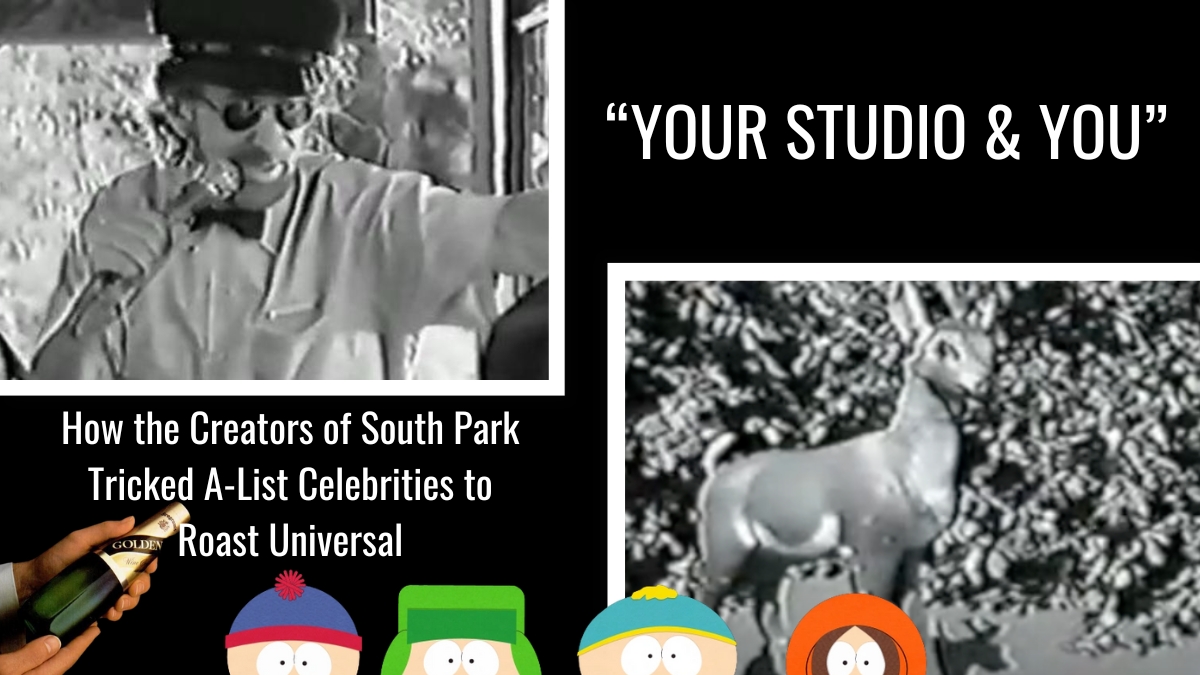
Universal Studios has a rich and storied history, but few moments are as peculiar—and as hilariously cutting—as the creation of Your Studio & You. This 14-minute parody film, commissioned in 1995 to celebrate Universal’s new ownership under Seagram’s, brings together an all-star cast, biting humor, and the unmistakable comedic fingerprints of Matt Stone and Trey Parker.
Long before South Park debuted on Comedy Central in 1997, Stone and Parker were already carving out a reputation for their irreverent style, and Your Studio & You perfectly encapsulates their knack for turning even the most corporate project into something delightfully subversive.
Matt Stone & Trey Parker Before South Park
Stone & Parker were already known out in Hollywood as funny guys. Thanks largely to “The Spirit of Christmas,” which was this video greeting card that they’d crafted for a Fox executive – who then distributed this infamously funny thing (which had Our Lord Jesus Christ & Santa Claus literally duking it out for the holiday affections of Cartman, Kenny, Stan & Kyle) to friends & family.
This was the early 1990s. No internet. Each copy of “The Spirit of Christmas” was made on VHS tape and then mailed. Went viral the old-fashioned way. It’s rumored that George Clooney made over 300 copies of “The Spirit of Christmas” and passed these VHS taps along to friends and family.
Things didn’t move as fast as they do today. “The Spirit of Christmas” still became a sensation out West.
Zucker Brothers
Matt & Trey also had other supporters in the entertainment industry. Among them David Zucker, who was one of the members of ZAZ (i.e., Zucker Abrahams Zucker), the talented trio that made “Airplane!” in 1980, “Top Secret!” in 1984 and the three “Naked Gun” movies.
- The original “Naked Gun” in 1988
- “Naked Gun 2 & 1/2 : The Smell of Fear” in 1991
- and “Naked Gun 33 & a 1/3: The Final Insult” in 1994
All five of these parody films had been made for Paramount Pictures. But in the Late Winter / Early Spring of 1995, Universal had persuaded the Zucker Brothers to come over and set up shop in a bungalow on their lower lot. With the hope that – at some point further on down the line – David & his brother Jerry would start making funny films for Universal.
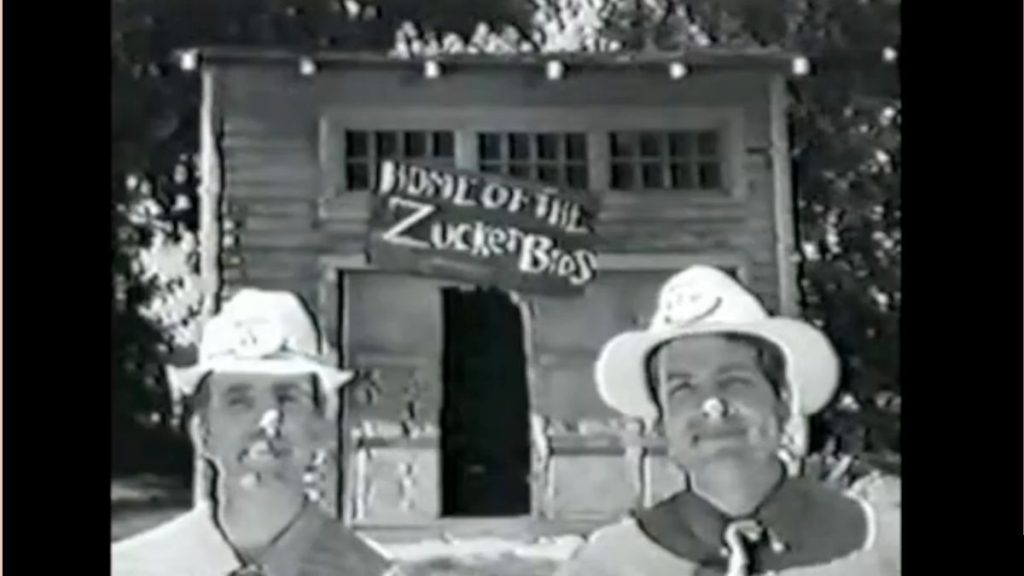
And it’s during this same window of time (We’re now talking April of 1995) that news breaks that Seagrams (Yep, the adult beverage company. Who – at the time – was making an absolute fortune on the sales of wine coolers) was about to buy a majority stake in MCAUniversal. We’re talking control of 80% of that company’s stock. Which would effectively make Seagrams the new owners of Universal Studios.
Edgar Bronfman
And Edgar Bronfman – the owner of Seagrams – knew that Universal had had a tough time with its previous owners – which had been the Matsushita Electric Industrial Co. of Japan. Matsushita had bought MCA back in November of 1990 for $7.5 billion but had never really understood the entertainment industry.
This is why – after repeatedly butting heads with Lew Wasserman & Sidney Sheinberg (i.e., the heads of Universal Studios & the Universal theme park respectively) when it came to creative control of this company – Matsushita decided to wash it hands of the entire enterprise. Agreeing to sell their holdings in MCA to Seagrams for $5.7 billion (effectively taking a nearly $2 billion loss on this investment).
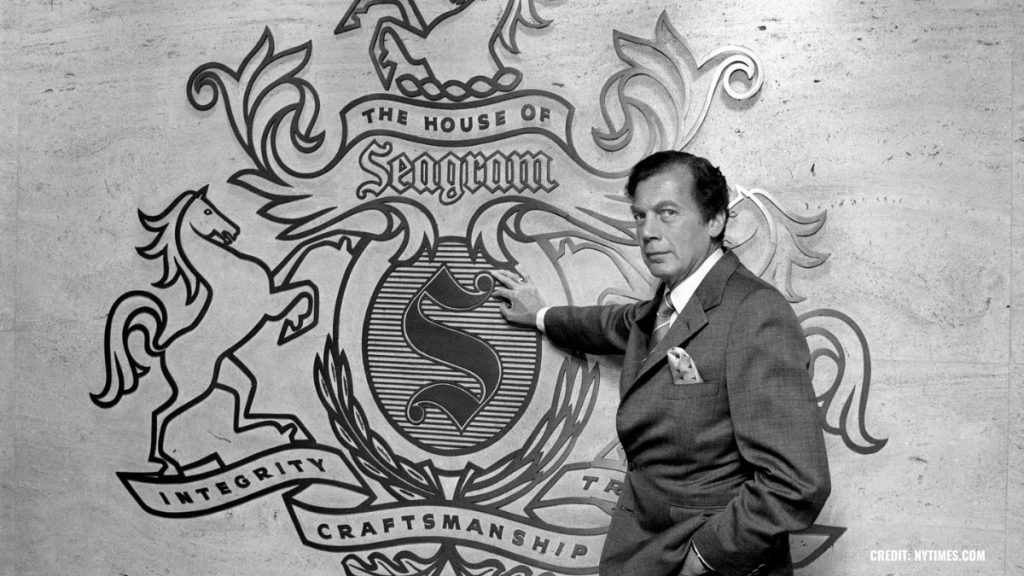
And Bronfman … He knew that some bad feeling had developed between Hollywood’s creative community and the Japanese owners of Universal. The thinking was that executives at Matsushita Electric had just not gotten what it took to make movies & TV shows.
And Edgar? Right from the get-go, he wanted to show that Seagrams was NOT going to be Matsushita Electric Redux. Bronfman was looking for a way to send a clear message to Hollywood’s creative community that Universal’s new owners got it. That they were willing to work with Hollywood to make the best possible movies & TV shows at Universal.
And how did Edgar decide to get this message across? By making a funny movie.
Zucker Commissions Trey Parker for “Your Studio & You”
Mind you, Bronfman himself didn’t make this film. The owner of Seagrams reached out to David Zucker. Who – after initially agreeing to produce this introduction-to-Universal film – then farmed out the production of the actual project to Trey Parker. Who – just two days before shooting was supposed to star on the Universal Lot – persuaded Matt Stone to come help him on this project.
Which brings us to “Your Studio and You.” Which is a parody of an educational film from the 1950s, right down to being shot in black & white and featuring a very generic soundtrack.
Now what’s amazing about watching “Your Studio and You” today is that this 14-minute-long film features some of the biggest names working in Hollywood back in the mid-1990s. We’re talking about people like recent Golden Globe winner Demi Moore, Sylvester Stallone, Michael J. Fox and Angela Lansbury. Not to mention two of the most powerful men in all of Hollywood, Steven Spielberg & Jeffrey Katzenberg.
And what’s especially interesting about watch “Your Studio and You” is that – as you watch these performers go through their paces in this motion pictures (which – most of the time – involves doing some innocuous task while holding a Seagram’s wine cooler) – you often get the feeling that this star is not in on the gag.
So how did Matt & Trey get away with this? Simple. There was never actually a script for “Your Studio and You.”
Filming “Your Studio & You” at Universal Studios Hollywood
Mind you, David Zucker would always insist that there was. Especially when he’d phone up celebrities on the Universal Lot and say “Hey, I’m sending over a couple of college kids later today. They’re working with me on a new parody film. It’s something that we’re doing for the new owners of Universal. I need just a half hour of your time. We’re shooting something special for the party we’ll be holding when the Seagrams people first arrive at the Studio. Absolutely. You’ll definitely get an invite to that party. So can I count on you to help these kids out? Beautiful. They’ll be over there later this morning.”
And then Matt & Trey would show up and say “… Dang, Miss Lansbury. We’re sorry. We must have left our copy of the ‘Your Studio and You’ script back in our office. Which is clear on the other side of the Lot. So – rather than waste your time – why don’t we do this instead? Follow us over to the Psycho House. Where we’re then going to get footage of you painting the front porch on Mother Bates’ house while you say ‘Gosh, with all of the wonderful improvements going on around here, everyone is going to want to work at Universal.’ Oh, and can we also get you to wear this button on the front of your blazer which reads ‘Universal is A-OK’ ? “
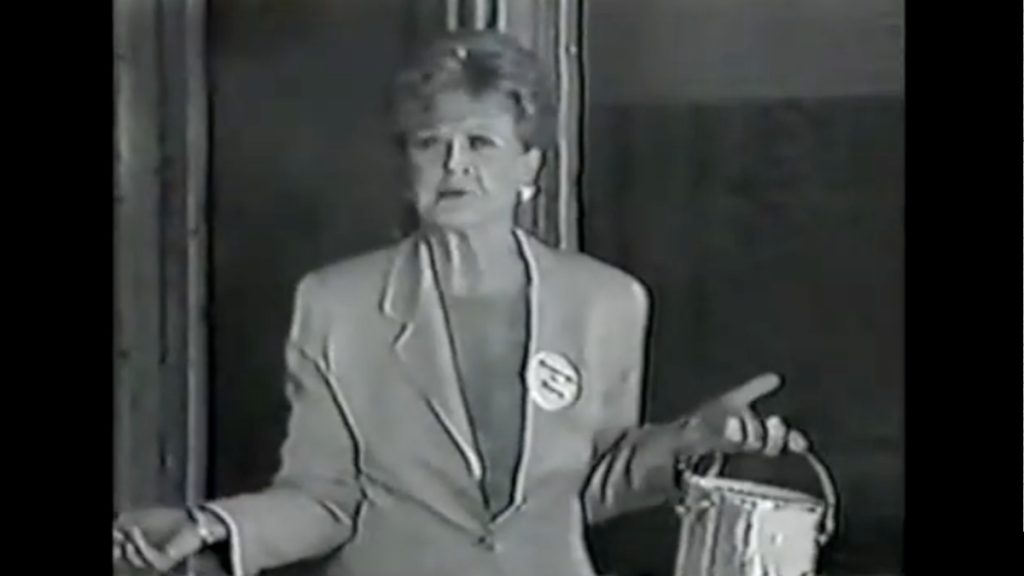
And over & over again, the biggest names who were working for Universal at that time took part in the production of “Your Studio & You” because A) David Zucker vouched for Matt Stone & Trey Parker and B) this was something that was being made for the new owners of Universal. And it’s just natural to want to get in good with the new boss.
Steven Spielberg, Jeffery Katzenberg, and Jaws
But no one at Universal anticipated that “Your Studio & You” would wind up being as sharp edged as the finished product turned out to be. I mean, it’s one thing to bite the hand that feeds you. But “Your Studio & You” ? It doesn’t just bite the hand. It takes the hand off at the wrist.
It’s a brutally funny film. With one of the meanest moments reserved for Steven Spielberg, who plays a driver on the Universal Studio Tour who’s trying to persuade a tram full of bored tourists (one of whom is played by Jeffery Katzenberg) that the “Shark Attack” scene down by Jaws Lagoon is actually exciting.
Spielberg actually says lines like “ … Whoa, whoa. What is going on here? Ladies and gentlemen, this never happens. Look out! It’s a shark! Whoa, that is one big scary shark.”
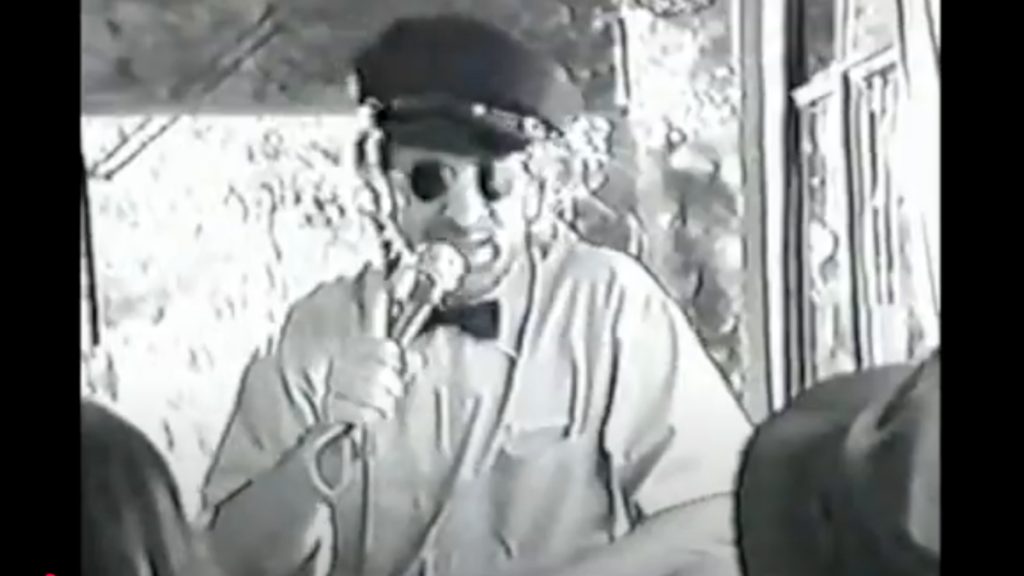
Mind you, as footage of this mechanical shark repeatedly coming up out of the water is shown, “Your Studio & You” ‘s off-screen narrator (who is voiced by Trey Parker says):
“But what about tomorrow? If we don’t keep in step with the times, things that were once neat and thrilling can become old and stupid.”
“Your Studio & You” Reception
This film was supposed to be shown only once at the welcoming party for Seagrams executive on the Universal Lot. And I’m told that – when Edgar Bronfman saw the finished product at that party – he reportedly turned to David Zucker and said “ … That’s a little more mean-spirited that I think it needed to be.”
And with that, “Your Studio & You” was supposed to go back into the Universal vault, never to be seen again. But when “South Park” debuted on Comedy Central in August of 1997 and then became a sensation for its biting humor, there was suddenly a lot of interest in what else Matt & Trey had done. Which is why copies of “The Spirit of Christmas” began to circulate. And – over time – copies of “Your Studio & You” began to bubble up.
Which – as Stone & Parker have repeatedly pointed out – was just not supposed to happen. Largely because none of the celebrities who appeared in “Your Studio & You” had never signed releases for Universal’s legal department. Because – again – this was for a movie that was only going to be shown once at a private function on the Universal Lot.
Matt mentioned (as part of a career retrospective at the Paley Center in LA back in 2000) that “ … they wouldn’t even let us keep a copy of the finished film.”
It’s a funny but brutal movie. And worth taking a look at today especially if you’re a theme park history buff because it shows Universal Studios Hollywood’s “Jurassic Park: The Ride” still under construction on the Lower Lot. That attraction would finally open to the public in June of 1996.
“Your Studio & You” became a lot easier to see after Seagrams sold off its share of Universal to Vivendi in 2000. Copies began propagating online after that. Though Universal Legal will periodically make an effort to get the latest copy of “Your Studio & You” taken off the Internet because – again – none of the performers who appear on camera ever signed the proper releases and/or were paid for their efforts.
That said, if you’re up for a mean-spirited laugh, “Your Studio & You” is well worth 14 minutes of your time. That said, once you watch this thing, be warned:
- You’re immediately going to be thirsty for a Seagram’s wine cooler
- And you’re going to have a sudden desire to go out & buy a porcelain deer.
Theme Parks & Themed Entertainment
Disney and Macy’s 90-Year Thanksgiving Day Parade Partnership: From Mickey’s First Balloon to Minnie’s Big Debut
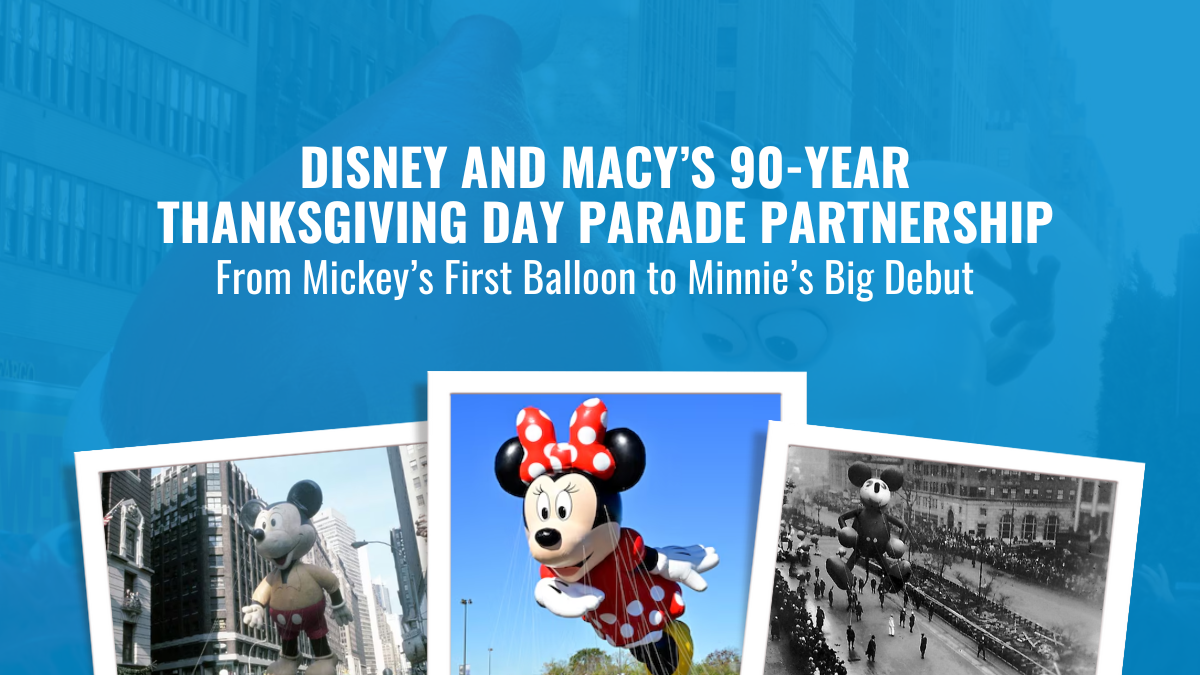
Now, folks, if you’re like me, Thanksgiving just wouldn’t be the same without a coffee, a cozy seat, and Macy’s Thanksgiving Day Parade on the TV. And if you’re really like me, you’re watching for one thing: Disney balloons floating down 34th Street. Ever wondered how Mickey, Donald, and soon Minnie Mouse found their way into this beloved New York tradition? Well, grab your popcorn because we’re diving into nearly 90 years of Disney’s partnership with Macy’s.
The Very First Parade and the Early Days of Balloons
The Macy’s Thanksgiving Day Parade goes way back to 1924, but if you can believe it, balloons weren’t part of the festivities until 1927. That first lineup included Felix the Cat, a dragon, and a toy soldier, all towering above the crowds. Back then, Macy’s had a pretty wild idea to end the parade: they would let the balloons drift off into the sky, free as birds. But this wasn’t just Macy’s feeling generous. Each balloon had a message attached, offering a $100 reward (about $1,800 in today’s dollars) for anyone who returned it to the flagship store on 34th Street.
And here’s where it gets interesting. This tradition carried on for a few years, right up until 1932, when Felix the Cat almost took down a plane flying over New York City! Imagine that—you’re flying into LaGuardia, and suddenly, there’s a 60-foot balloon drifting toward your wing. Needless to say, that was the end of Macy’s “fly away” stunt, and from then on, the balloons have stayed firmly grounded after the parade ends.
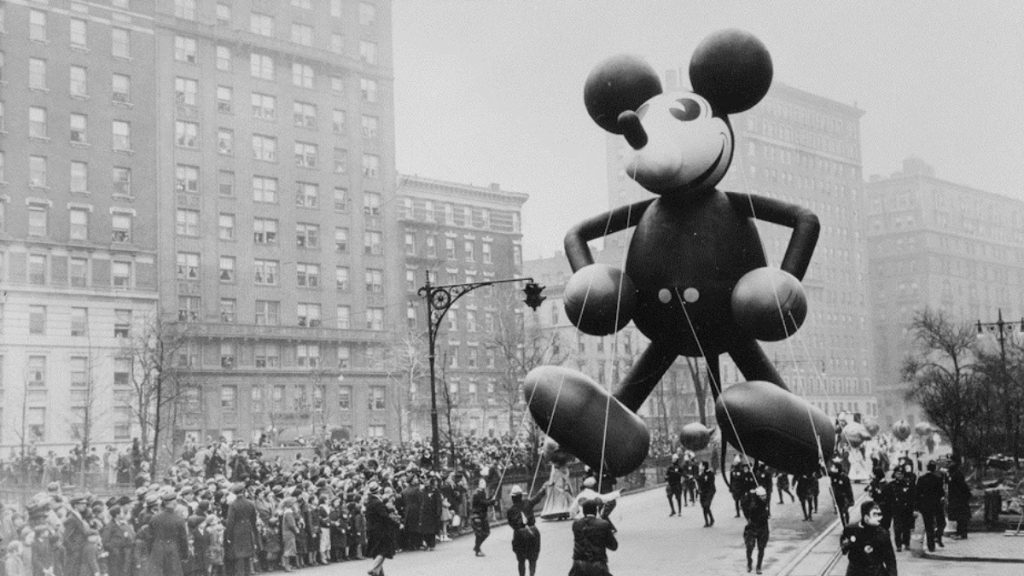
1934: Mickey Mouse Floats In, and Disney Joins the Parade
It was 1934 when Mickey Mouse finally made his grand debut in the Macy’s parade. Rumor has it Walt Disney himself collaborated with Macy’s on the design, and by today’s standards, that first Mickey balloon was a bit of a rough cut. This early Mickey had a hotdog-shaped body, and those oversized ears gave him a slightly lopsided look. But no one seemed to mind. Mickey was there, larger than life, floating down the streets of New York, and the crowd loved him.
Mickey wasn’t alone that year. He was joined by Pluto, Horace Horsecollar, and even the Big Bad Wolf and Practical Pig from The Three Little Pigs, making it a full Disney lineup for the first time. Back then, Disney wasn’t yet the entertainment powerhouse we know today, so for Walt, getting these characters in the parade meant making a deal. Macy’s required its star logo to be featured on each Disney balloon—a small concession that set the stage for Disney’s long-standing presence in the parade.
Duck Joins and Towers Over Mickey
A year later, in 1935, Macy’s introduced Donald Duck to the lineup, and here’s where things got interesting. Mickey may have been the first Disney character to float through the parade, but Donald made a huge splash—literally. His balloon was an enormous 60 feet tall and 65 feet long, towering over Mickey’s 40-foot frame. Donald quickly became a fan favorite, appearing in the lineup for several years before being retired.
Fast-forward a few decades, and Donald was back for a special appearance in 1984 to celebrate his 50th birthday. Macy’s dug the balloon out of storage, re-inflated it, and sent Donald down 34th Street once again, bringing a bit of nostalgia to the holiday crowd.
A Somber Parade in 2001
Now, one of my most memorable trips to the parade was in 2001, just weeks after the 9/11 attacks. Nancy and I, along with our friends, headed down to New York, and the mood was something I’ll never forget. We watched the start of the parade from Central Park West, but before that, we went to the Museum of Natural History the night before to see the balloons being inflated. They were covered in massive cargo nets, with sandbags holding them down. It’s surreal to see these enormous balloons anchored down before they’re set free.
That year, security was intense, with police lining the streets, and then-Mayor Rudy Giuliani rode on the Big Apple float to roaring applause. People cheered his name, waving and shouting as he passed. It felt like the entire city had turned out to show their resilience. Even amidst all the heightened security and tension, seeing those balloons—brought a bit of joy back to the city.
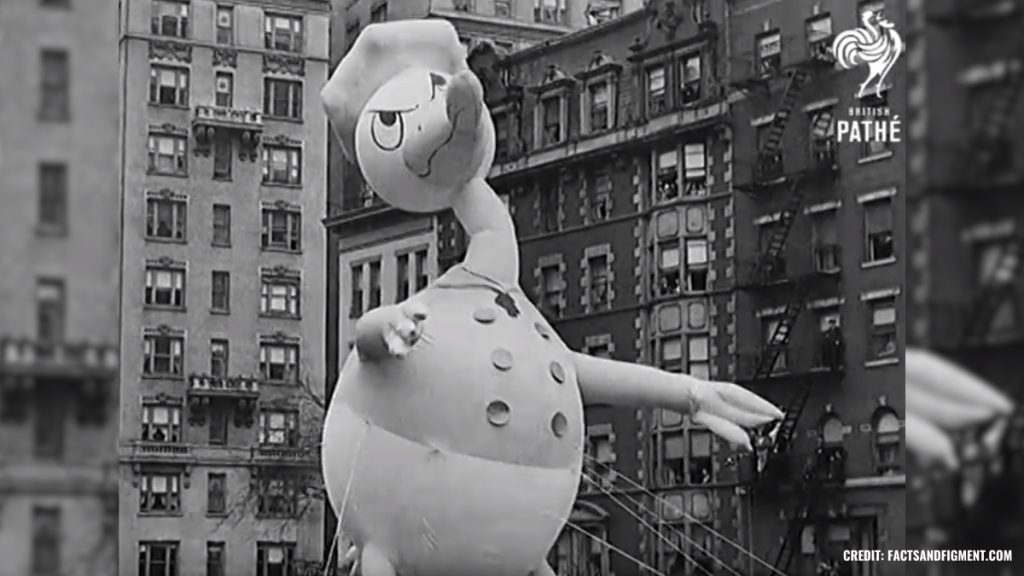
Balloon Prep: From New Jersey’s MetLife Stadium to California’s D23 Expo
Each year before the parade, Macy’s holds a rehearsal event known as Balloon Fest at MetLife Stadium in New Jersey. This is where handlers get their first crack at guiding the balloons, practicing with their parade masters, and learning the ropes—literally. It’s an entire production unto itself, with dozens of people rehearsing to make sure these enormous inflatables glide smoothly down the streets of New York on parade day.
In 2015, Macy’s took the balloon show on the road, bringing their Buzz Lightyear balloon out to California for the D23 Expo. I was lucky enough to be there, and watching Buzz get inflated piece by piece in the Anaheim Convention Center parking lot was something to behold. Each section was filled with helium in stages, and when they got around to Buzz’s lower half, well, there were more than a few gas-related jokes from the crowd.
These balloons seem to have a personality all their own, and seeing one like Buzz come to life up close—even outside of New York—had all the excitement and anticipation of the real deal.

Mickey’s Comeback as a Bandleader and Sailor Mickey
After a long hiatus, Mickey Mouse made his return to the Macy’s parade in 2000, this time sporting a new bandleader outfit. Nine years later, in 2009, Sailor Mickey joined the lineup, promoting Disney Cruise Line with a nautical twist. Over the past two decades, Disney has continued to enchant parade-goers with characters like Buzz Lightyear in 2008 and Olaf from Frozen in 2017. These balloons keep Disney’s iconic characters front and center, drawing in both longtime fans and new viewers.
But ever wonder what happens to the balloons after they reach the end of 34th Street? They don’t just disappear. Each balloon is carefully deflated, rolled up like a massive piece of laundry, and packed into storage bins. From there, they’re carted back through the Lincoln Tunnel to Macy’s Parade Studio in New Jersey, where they await their next flight.
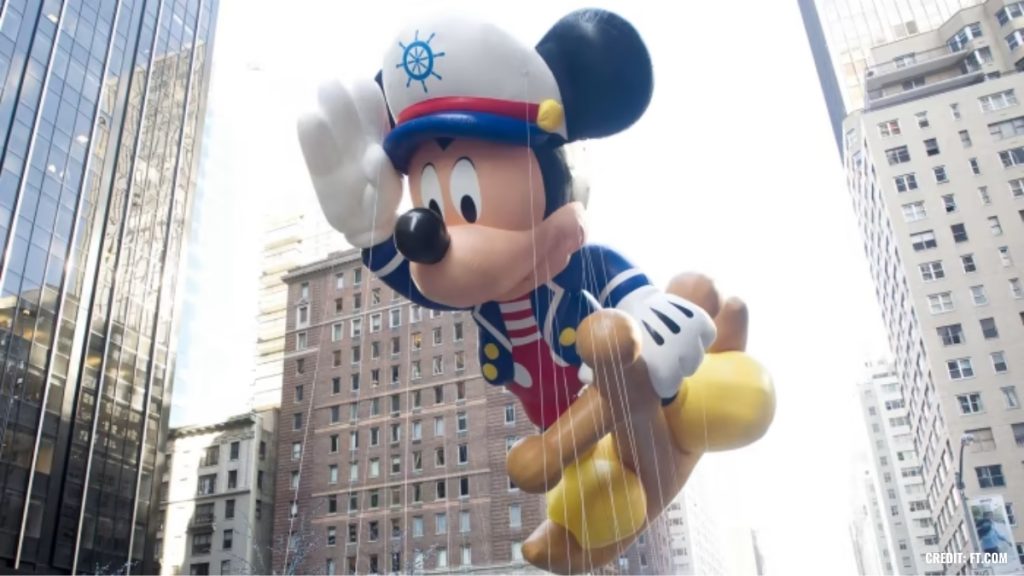
Macy’s Disney Celebration at Hollywood Studios
In 1992, Macy’s took the spirit of the parade down to Disney-MGM Studios in Orlando. After that year’s parade, several balloons—including Santa Goofy, Kermit the Frog, and Betty Boop—were transported to Hollywood Studios, re-inflated, and anchored along New York Street as part of a holiday display. Visitors could walk through this “Macy’s New York Christmas” setup and see the balloons up close, right in the middle of the park. While this display only ran for one season, it paved the way for the Osborne Family Spectacle of Dancing Lights, which became a holiday staple at the park for years to come.
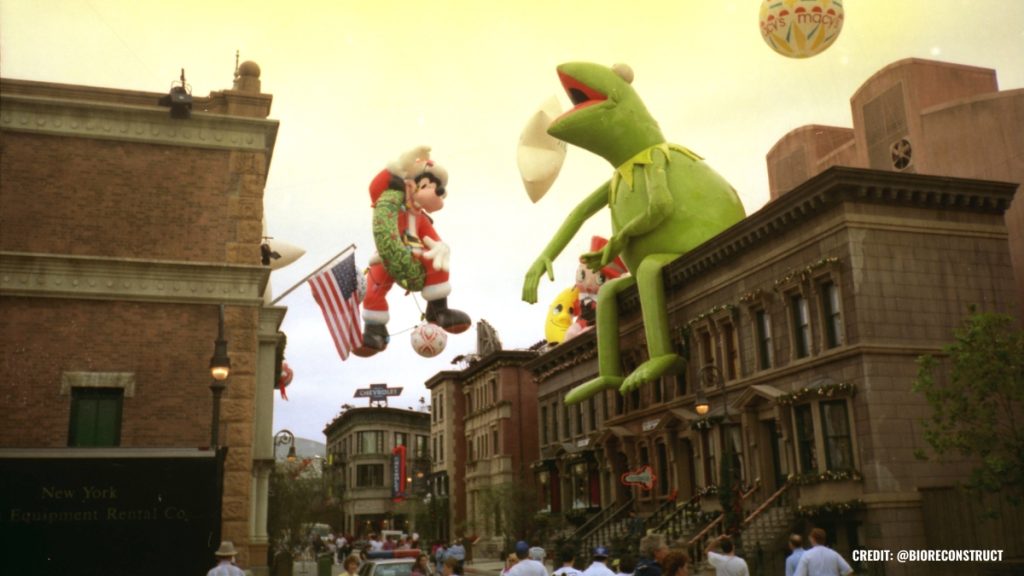
Minnie Mouse’s Long-Awaited Debut in 2024
This year, Minnie Mouse will finally join the parade, making her long-overdue debut. Macy’s is rolling out the red carpet for Minnie’s arrival with special pop-up shops across the country, where fans can find exclusive Minnie ears, blown-glass ornaments, T-shirts, and more to celebrate her first appearance in the Thanksgiving Day Parade.
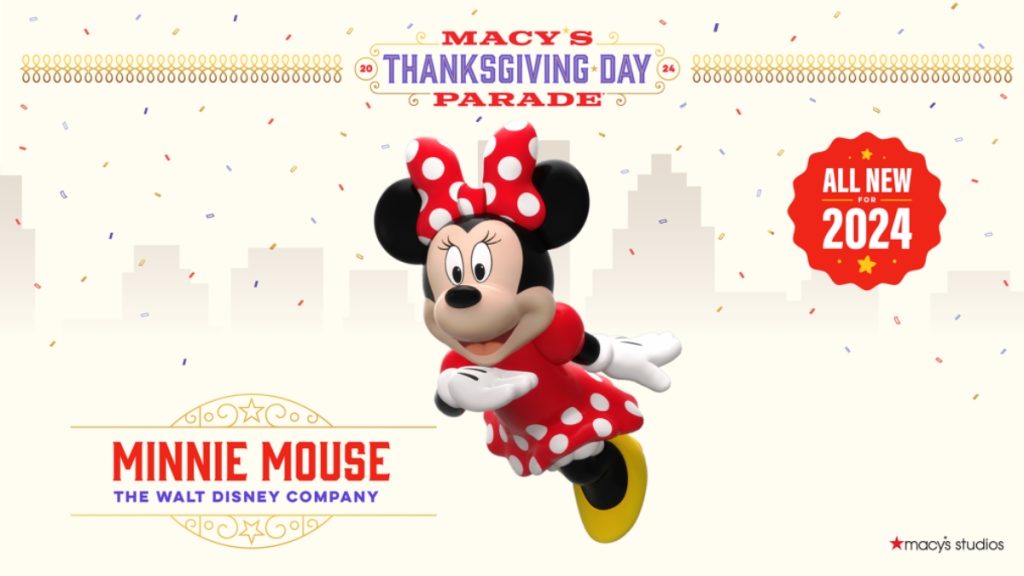
For those lucky enough to catch the parade this year, you’ll see Minnie take her first float down 34th Street, decked out in her iconic red bow and polka-dot dress. Macy’s and Disney are also unveiling a new Disney Cruise Line float honoring all eight ships, including the latest, the Disney Treasure.
As always, I’ll be watching from my favorite chair, coffee in hand, as Minnie makes her grand entrance. The 98th annual Macy’s Thanksgiving Day Parade airs live on NBC, and it’s a tradition you won’t want to miss—whether you’re on 34th Street or tuning in from home.
-
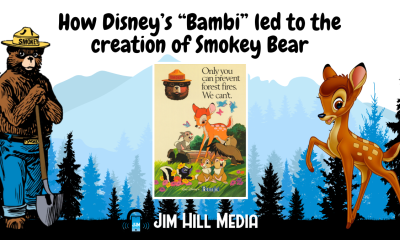
 Film & Movies12 months ago
Film & Movies12 months agoHow Disney’s “Bambi” led to the creation of Smokey Bear
-
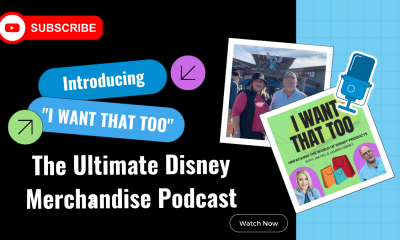
 Merchandise12 months ago
Merchandise12 months agoIntroducing “I Want That Too” – The Ultimate Disney Merchandise Podcast
-
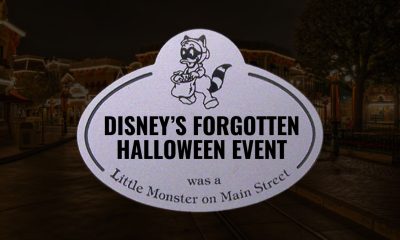
 Theme Parks & Themed Entertainment7 months ago
Theme Parks & Themed Entertainment7 months agoDisney’s Forgotten Halloween Event: The Original Little Monsters on Main Street
-
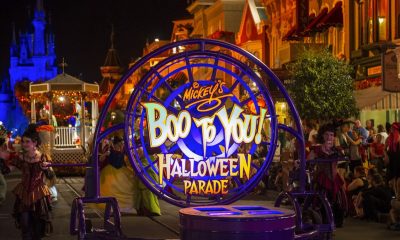
 Theme Parks & Themed Entertainment7 months ago
Theme Parks & Themed Entertainment7 months agoThe Story of Mickey’s Not-So-Scary Halloween Party: From One Night to a Halloween Family Tradition
-
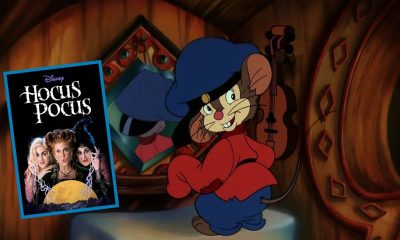
 Film & Movies7 months ago
Film & Movies7 months agoHow “An American Tail” Led to Disney’s “Hocus Pocus”
-
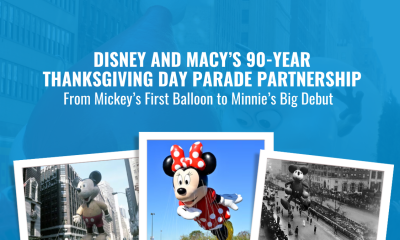
 Theme Parks & Themed Entertainment5 months ago
Theme Parks & Themed Entertainment5 months agoDisney and Macy’s 90-Year Thanksgiving Day Parade Partnership: From Mickey’s First Balloon to Minnie’s Big Debut
-
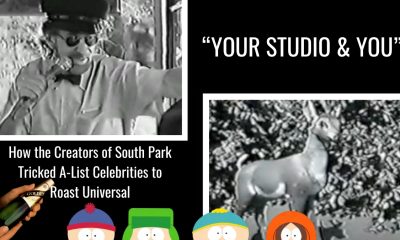
 Television & Shows3 months ago
Television & Shows3 months agoHow the Creators of South Park Tricked A-List Celebrities to Roast Universal – “Your Studio & You”
-

 History2 months ago
History2 months agoThe Super Bowl & Disney: The Untold Story Behind ‘I’m Going to Disneyland!’

